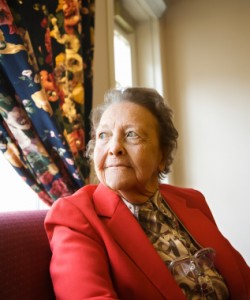This recent CBS News Report shined light on the increasingly difficult role of the family caregiver. While Americans are living longer lives, they aren’t necessarily living healthy ones. As couples delay having children until later in life, they find themselves squeezed between their aging parents’ needs and those of their own children.
The profile of a typical caregiver is a woman in her late forties or early fifties. In addition to providing care, nearly two-thirds of caregivers work part-time or full-time. According to a July 2012 AARP Caregiver Study, 63% of caregivers spend nine or more hours a week providing care to their aging loved one. The result is a stressful and often financially challenging middle age.
What can caregivers who are sandwiched between the generations do?
Our Aging-in-Place Team here at Assisted Living Services, Inc. offers these tips to help families manage:
Accept That You Will Need Help. Many adult children are reluctant to relinquish any part of the caregiver role. They are also hesitant to turn over any of the responsibilities they have for their children’s busy lives. To be able to manage this on a long-term basis, accept help from friends and family when it is offered.
 Build a Crisis Plan Before You Need It. What if you were to get sick or have to goout of town unexpectedly? Who would care for your parent? Our best advice is to interview home care providers before you need them. Maybe even test the waters with a few hours of help each week. Then when the unexpected happens, you will be ready.
Build a Crisis Plan Before You Need It. What if you were to get sick or have to goout of town unexpectedly? Who would care for your parent? Our best advice is to interview home care providers before you need them. Maybe even test the waters with a few hours of help each week. Then when the unexpected happens, you will be ready.
Care for the Caregiver. This is one recommendation caregivers find most challenging. But in order to take care of others you first have to take care of you. Finding time to exercise and eat healthy foods is a necessity. It might mean taking a walk or running the stairs at work during your lunch hour or investigating which local restaurants offer healthy meals in a hurry. It may you take your parent on a walk with you (if they are able) when you go to prepare their meals. All of these small activities can add up to a healthier caregiver.
Explore Technology Solutions for Caregiver Tasks. In the July 2012 AARP Caregiver Study, 57% of caregivers reported medication assistance as one of their caregiver duties. Affordable Medication Reminder Systems can help eliminate multiple trips to a loved one’s home to dispense medicine each day. These locked dispensers allow seniors access to only the area of the pillbox they need for that dose. Technologies allow them to be notified by phone, text message or an alert sound when it is time to take their medicine. They also notify caregivers if something is wrong.
Have you considered the role technology could play in your caregiver duties?





